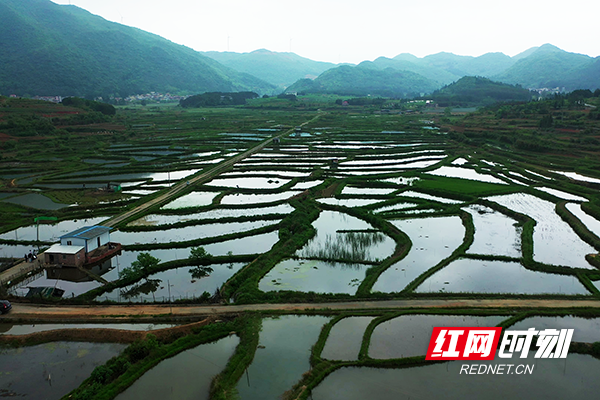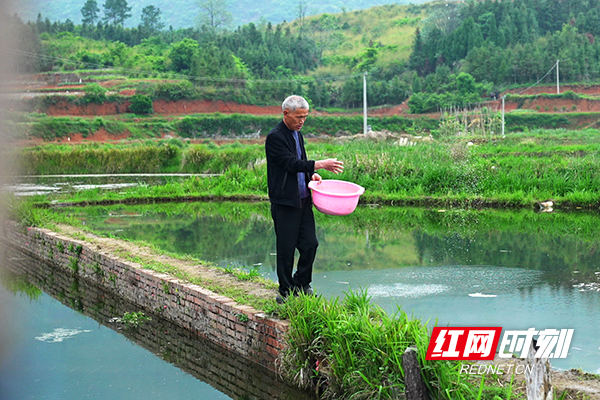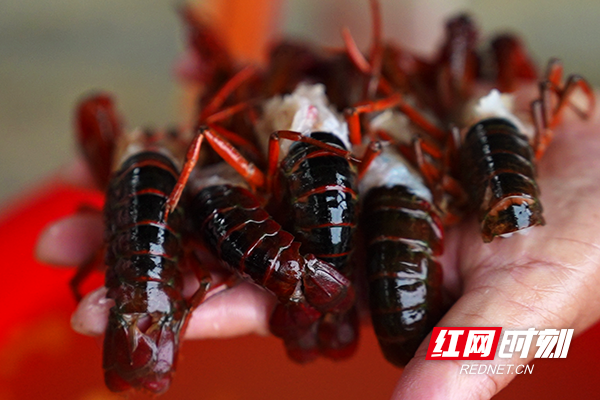Xiaowan Village increases income from rice-crayfish farming
2023-05-13
In recent years, with the strong support of the town government and village committee, villagers of Xiaowan Village, Linwu County, Chenzhou City have made use of high-quality natural resources to develop a rice-crayfish farming model. The crayfish have nurtured a big industry and become a powerful engine for rural revitalization.

As the weather is getting hotter, the crayfish has been gradually served on people’s nightly dinner tables. Xiaowan Village is located in a hilly plain, where there are many good fields with deep and fertile soil, no heavy metal pollution, and ample water from mountain springs. The local villagers take full advantage of the flat terrain and the abundant mountain spring water to raise crayfish. The crayfish raised in the pollution-free water are large and tasty.
Tang Xiaozhi has raised crayfish for 10 years. In recent years, under the unified planning of the village committee, he has transferred more than 50 mu (about 3.33 hectares) of paddy fields. The rice-crayfish farming model is a major feature of Xiaowan Village. Every spring and summer, farmers mainly raise crayfish, and in August, they plant rice while raising crayfish. The crayfish live in the rice fields, weeding and loosening the soil, while their excrement provides fertilizer for the rice.

Tang Jigui started raising crayfish a year ago. He said that when he saw others doing well, he also developed crayfish farming himself. He has been able to earn over 3,000 yuan per mu (about 0.067 hectares), which is several times more than his previous income. He can also grow rice, which is another source of income.
In recent years, in order to increase farmers’ income and promote rural revitalization, Xiaowan Village has promoted the rice-crayfish farming model in accordance with local conditions, built crayfish breeding bases, and implemented unified planning and cultivation for collective development.
Nowadays, Xiaowan Village has achieved income growth and prosperity through the operation mode of “village collective plus cooperative plus farmer”, with poverty-stricken households and villagers led by big farmers to develop crayfish farming together.

At present, Xiaowan Village has raised more than 300 mu (20 hectares) of crayfish, with each mu (about 0.067 hectares) producing over 150 kilograms of high-quality crayfish and an annual output of over 45,000 kilograms. The average household income of the villagers has increased by more than 10,000 yuan. As a next step, the village will also scale up its aquaculture for more yields and income from one field.




